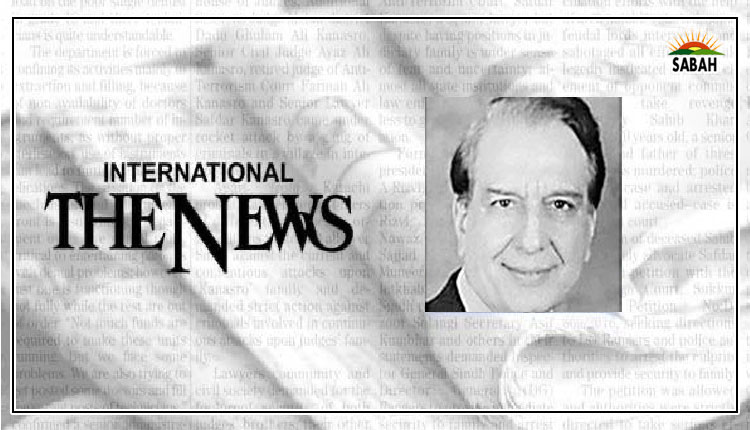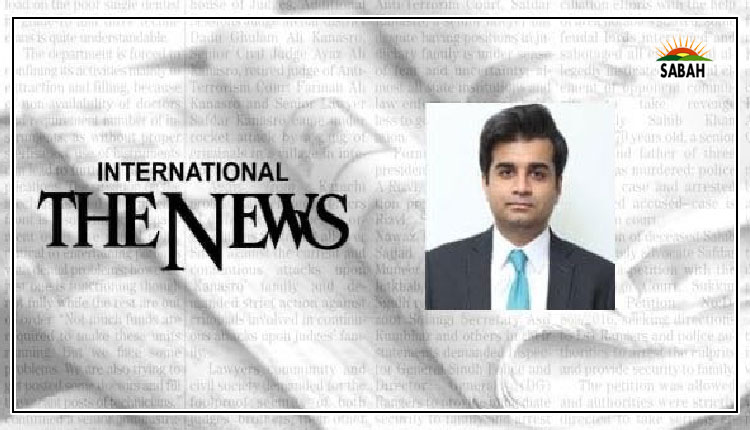The worst is yet to come….Ammar Habib Khan
The incessant desire to control or fix prices has rarely ever yielded a positive outcome. The obsession to maintain an arbitrary exchange rate has been at the centre of our economic woes for the last three decades.
The results of such an obsession have always been disastrous. It has led to a point where the ability of the economy to develop capacity and push up its aggregate supply has now been compromised. An overvalued exchange rate propped up by dwindling foreign exchange reserves is a strategy that has a very short runway. As reserves dry up, administrative measures to ration foreign currency take place, which further restricts an already constrained aggregate supply.
Over the last few months, as foreign exchange reserves of Pakistan continue to erode, administrative measures to control imports have taken over. This has led to an array of unintended consequences. The inability to import raw material in a timely manner can choke supply chains. As supply chains are choked, production of the final product is compromised, which results in overall economic contraction. As supply chains are disrupted, it eventually leads to a shortage of goods in the market, which drives up prices, and causes more inflation.
A supply chain crisis unfolding right now is that of poultry. As import of key raw materials is restricted, the development of feed that provides nutrition to chicken is compromised, which results in lower production of eggs, and chicken to be used as poultry, eventually resulting in higher prices in the market. Obtuse administrative measures result in unintended consequences that can only be rectified by fixing supply chains. But, yielding to wisdom that has consistently failed over decades, we resort to more administrative measures, which lead to more problems.
An exchange rate is a function of demand and supply. As demand for a currency increases (in our case, the US$), so does its price, if the supply of the currency either remains constant or decreases. If we want the price of the US$ to decrease for us, we either need to increase its supply (by exporting more, getting more investments, and remittances), or reduce its demand (by importing less). As we have now attuned the economy to import even the most basic staples, such as fuel, lentils, pulses, edible oil, etc, the opportunity to reduce demand is very limited.
Reducing demand for imports of basic staples would require a massive retooling of the economy, whether that is through deployment of public transit infrastructure to reduce energy requirements, doubling down on local energy sources, or through ensuring local food security. Simple fixes, but which require strong political will, which hasn’t really existed for decades.
As we guard arbitrarily fixed exchange rates on weak foundations, an informal market for foreign currency has exploded. There exists a differential of roughly 15 per cent between the interbank rate, and the actual open market rate on which transactions can happen.
To put it simply, if you are a freelancer, or a technology company exporting services, earning precious foreign currency for the country, getting income proceeds through a formal channel, you are going to get a PKR-US$ rate of 225. Meanwhile, if you want to pay for services in the US$, you are going to have to pay at a rate in the range of 260. This has also been confirmed by multiple scheduled banks, regulated by the central bank, through boilerplate carefully worded notices. This results in a significant FX spread for banks, as they accrue profits off the customer’s misery.
Given such a massive spread between the official rate and the actual market rate, it makes little sense for anyone bringing in foreign currency to either differ bringing it in or route the same to offshore accounts. This can be seen in the case of remittances, where remittances being routed through formal channels are declining. As export and remittance proceeds, and supply of foreign currency dries up, it leads to a vicious circle where the price of the US$ in the informal market increases further, and the spread between official and market rate widens. A shadow market for foreign currency has been a hallmark of distressed economies like Lebanon, Argentina, Zimbabwe, etc. We have also joined this enviable club.
Eventually as supply of foreign currency erodes, the price of the US$ , even in the official market, is going to shoot up, which means fuel and other staples being imported officially will see their prices increase, causing another round of price inflation. Once the FX rate adjusts to market realities, prices of goods will also adjust resulting in more inflation. The purchasing power of the most vulnerable segments has already eroded any gains made during the last seven years, and it is going to get worse.
Cost-driven and supply shock driven inflation will lead to higher prices, followed by second round effects of inflation as wages and prices of secondary goods in the market readjust. We may continue to see double-digit inflation for another 18 months till a higher base effect kicks in unless someone wants to go on an adventure again and households continue to pay for such arbitrary adventures.
The economic outlook does not look good under the current decision-making framework. Delaying the inevitable adjustments will only cause pain and suffering for the most vulnerable segments of our population.
Courtesy The News












